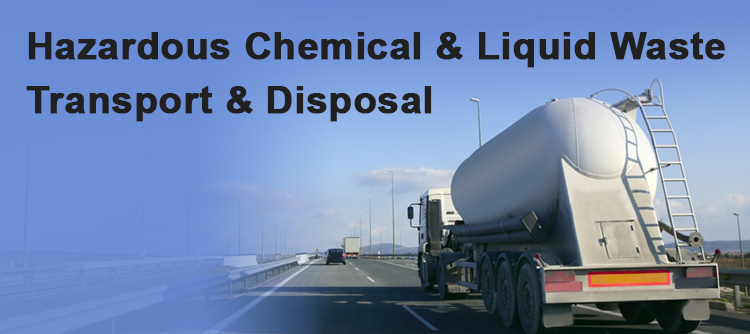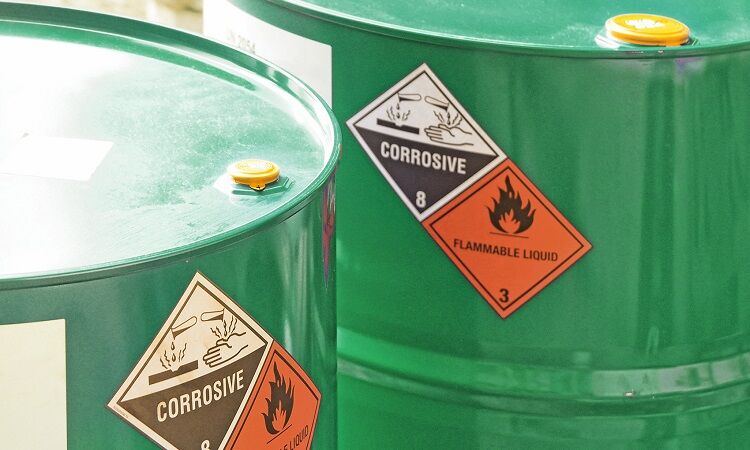Industrial Wastewater Treatment: Advanced Methods for Effective Management
Industrial Wastewater Treatment: Advanced Methods for Effective Management
Blog Article
How Fluid Waste Disposal Works: A Detailed Overview of Strategies and Technologies Utilized

Overview of Fluid Waste Kind
The complexity of liquid waste types requires a complete understanding of their features and effects for disposal. Fluid waste can broadly be classified right into numerous kinds, including industrial, local, agricultural, and dangerous waste. Each category exhibits distinctive buildings, needing details monitoring strategies to reduce environmental and health and wellness dangers.
Industrial liquid waste stems from making procedures and commonly consists of a series of contaminants, such as heavy steels, solvents, and natural compounds. Municipal fluid waste, mainly comprising wastewater from households and business facilities, contains natural issue, nutrients, and microorganisms (industrial wastewater treatment). Agricultural fluid waste, including runoff from ranches, may contain plant foods, pesticides, and pet waste, positioning threats to water top quality and ecosystems
Hazardous liquid waste is defined by its poisoning, reactivity, or potential to trigger harm. This classification consists of compounds like acids, bases, and certain chemicals that demand strict handling and disposal methods. Understanding these varied liquid waste types is essential for creating effective disposal techniques and guaranteeing conformity with environmental guidelines. Correct classification and characterization are necessary for carrying out appropriate treatment strategies and minimizing the negative influences on public health and the atmosphere.
Physical Therapy Approaches

Testing is the preliminary step, where larger particles and debris are removed from the fluid waste making use of displays or grates. This procedure secures downstream devices from damage and guarantees smoother procedure. Adhering to screening, sedimentation uses gravitational force to different solids from fluids. In sedimentation storage tanks, larger fragments clear up near the bottom, developing a sludge layer, while the clarified liquid can be further treated.
Filtering is one more essential technique that includes passing the liquid with permeable materials, such as sand or membrane layers, to record smaller bits. This action boosts the high quality of the liquid, making it appropriate for subsequent treatment processes.

Chemical Treatment Strategies
Chemical treatment strategies are essential for successfully handling liquid waste, especially in resolving dissolved and colloidal pollutants that physical techniques may not sufficiently remove. These techniques utilize numerous chemical agents to counteract, speed up, or transform unsafe substances right into much less damaging forms.
One typical method is coagulation and flocculation, where chemicals such as alum or ferric chloride are contributed to advertise the aggregation of suspended bits. This procedure enhances sedimentation, enabling easier check this site out removal of the resulting sludge. In addition, oxidation procedures, employing representatives like chlorine or ozone, are used to damage down complex organic compounds and virus, providing the waste much safer for discharge or more therapy.
Neutralization is another vital strategy, which readjusts the pH of acidic or alkaline waste streams to neutral levels, preventing potential damage to downstream systems and the atmosphere. In addition, progressed oxidation procedures (AOPs) utilize combinations of oxidants and ultraviolet light to deteriorate consistent toxins, attaining a greater degree of treatment efficiency.
Biological Treatment Processes
Biological treatment processes play a vital duty in the monitoring of fluid waste by using microbes to decay raw material and reduce contaminant levels. These procedures can be generally classified right into anaerobic and cardio therapies, each using details microbial communities to attain efficient waste deterioration.
Aerobic treatment includes making use of oxygen to assist in the malfunction of organic materials by microorganisms. This process is frequently executed in turned on sludge systems, where oygenation containers provide a conducive atmosphere for microbial growth, causing the oxidation of organic toxins. The resultant biomass can be divided from dealt with effluent through sedimentation.
On the other hand, anaerobic therapy occurs in the absence of oxygen, counting on different germs to damage down natural issue. This approach is particularly beneficial for high-strength waste, as it creates biogas, a sustainable power resource, while reducing sludge manufacturing. Technologies such as anaerobic digesters are frequently utilized in community and Website commercial applications.
Both aerobic and anaerobic organic treatments not just reduce the ecological effect of liquid waste however also promote resource recuperation, making them essential components of lasting waste management approaches. Their adaptability, effectiveness, and performance sustain their prevalent implementation across numerous sectors.
Emerging Technologies in Disposal
Innovative strategies to liquid waste disposal are quickly advancing, driven by developments in innovation and a boosting focus on sustainability. Among these emerging innovations, membrane layer bioreactors (MBRs) have actually obtained traction for their capacity to incorporate organic treatment with membrane filtration, resulting in high-grade effluent that can be reused in various applications. MBRs allow smaller footprints and much more efficient operations compared to conventional systems.
One more appealing advancement is making use of anaerobic food digestion combined with nutrient recovery technologies, which not only treats fluid waste yet likewise produces biogas and recuperates important nutrients like nitrogen and phosphorus. This double benefit enhances source effectiveness and lowers ecological effect.
Additionally, advanced oxidation procedures (AOPs) are being embraced for the destruction of complex organic contaminants. These methods utilize effective oxidants and stimulants to break down impurities at the molecular level, providing an extremely reliable option for difficult waste streams.
Moreover, the integration of expert system and artificial intelligence in waste management systems is optimizing operational efficiency my sources and anticipating maintenance, bring about decreased prices and enhanced environmental conformity. These technologies mirror a considerable change towards even more efficient and sustainable fluid garbage disposal methods.
Conclusion
In conclusion, reliable liquid waste disposal requires a thorough understanding of various methods and modern technologies. By continuously advancing these approaches, it ends up being feasible to address the growing difficulties connected with fluid waste, inevitably adding to environmental security and resource healing.
Fluid waste disposal is a vital facet of environmental management, requiring an extensive understanding of different methods and modern technologies tailored to different waste kinds. Liquid waste can generally be classified right into numerous kinds, consisting of commercial, metropolitan, farming, and unsafe waste. Agricultural fluid waste, including drainage from farms, may include fertilizers, pesticides, and pet waste, posing risks to water top quality and ecosystems.
Various physical treatment approaches play a critical role in managing fluid waste properly - industrial wastewater treatment.In final thought, efficient liquid waste disposal demands a thorough understanding of numerous methods and innovations
Report this page